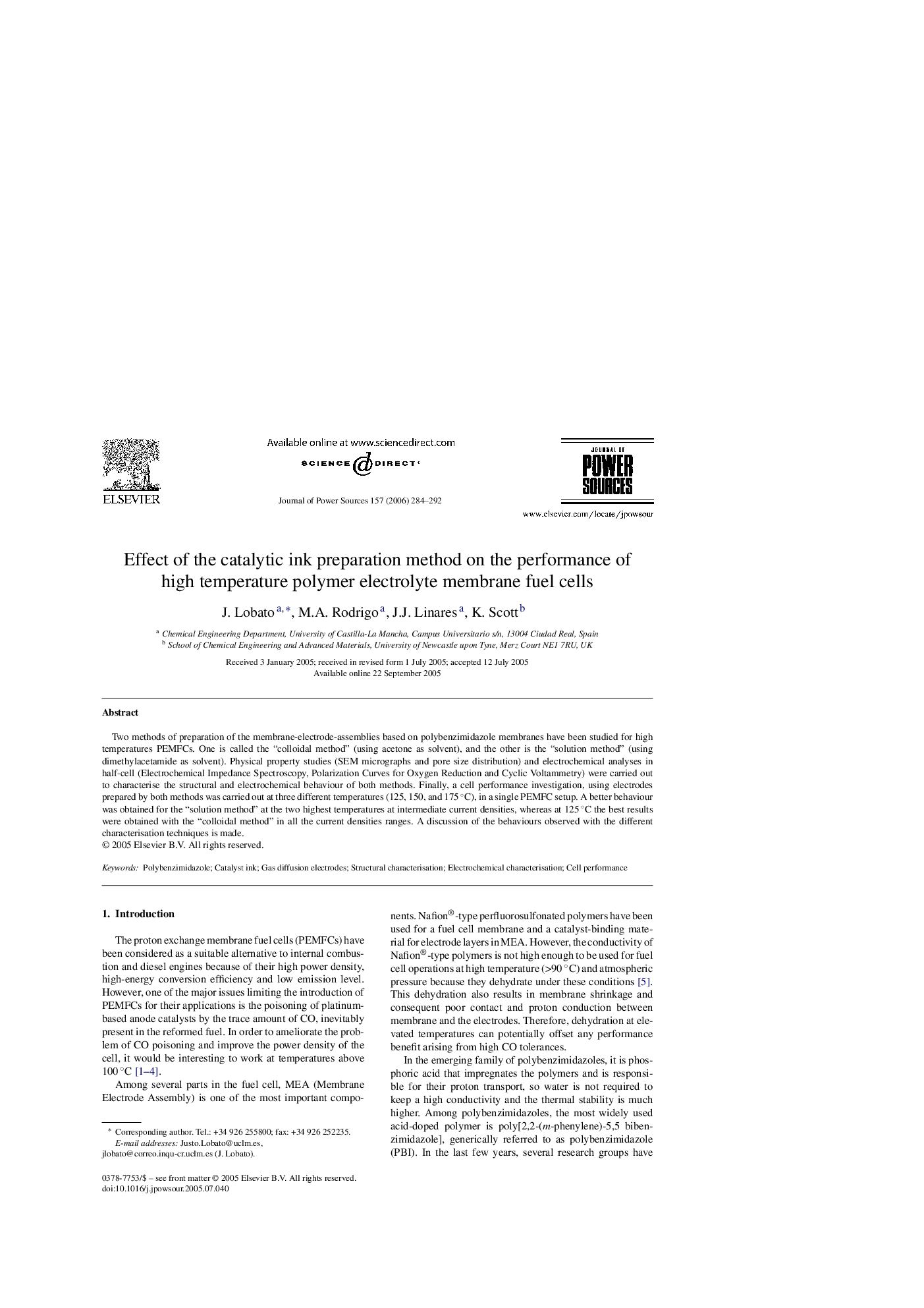| Article ID | Journal | Published Year | Pages | File Type |
|---|---|---|---|---|
| 1292673 | Journal of Power Sources | 2006 | 9 Pages |
Two methods of preparation of the membrane-electrode-assemblies based on polybenzimidazole membranes have been studied for high temperatures PEMFCs. One is called the “colloidal method” (using acetone as solvent), and the other is the “solution method” (using dimethylacetamide as solvent). Physical property studies (SEM micrographs and pore size distribution) and electrochemical analyses in half-cell (Electrochemical Impedance Spectroscopy, Polarization Curves for Oxygen Reduction and Cyclic Voltammetry) were carried out to characterise the structural and electrochemical behaviour of both methods. Finally, a cell performance investigation, using electrodes prepared by both methods was carried out at three different temperatures (125, 150, and 175 °C), in a single PEMFC setup. A better behaviour was obtained for the “solution method” at the two highest temperatures at intermediate current densities, whereas at 125 °C the best results were obtained with the “colloidal method” in all the current densities ranges. A discussion of the behaviours observed with the different characterisation techniques is made.
